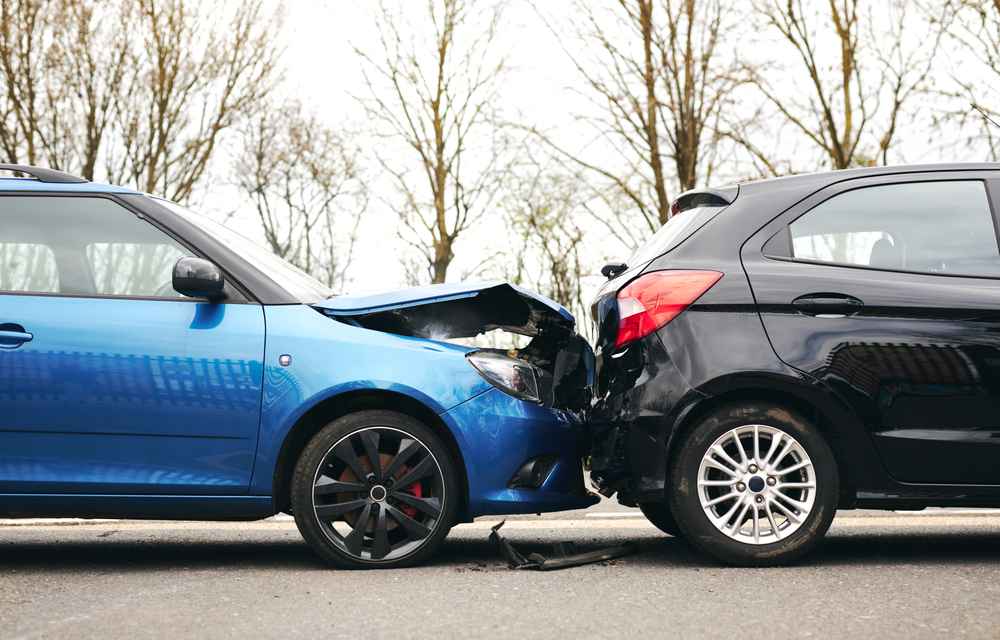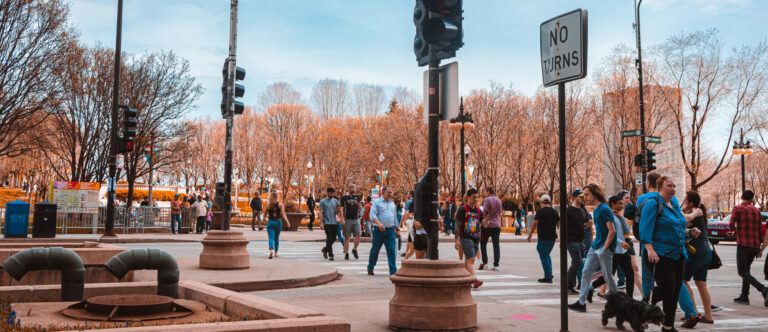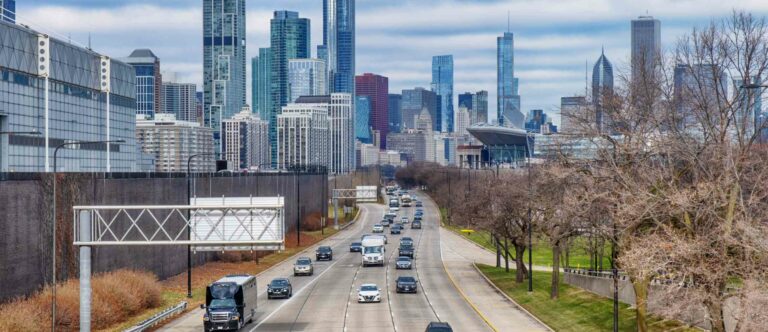Car accidents happen all across Chicago. Some involve minor damage. Others cause serious injuries or death. Each type of crash carries different risks. Each one may raise different legal questions.
If you or someone you love has been hurt, knowing the type of crash can help you take the next step. This article explains the most common types of Chicago car accidents. It shows how they happen and what issues they raise.
Rear-End Collisions
Rear-end crashes happen when one car hits another from behind. These are some of the most common accidents in Chicago.
Most rear-end crashes happen in heavy traffic or at intersections. Drivers may follow too closely. They may also be distracted or speeding. Even a short lapse in attention can cause a crash.
People often assume the rear driver is always at fault. This is not always true. If the front driver slammed on the brakes for no reason or had brake lights that didn’t work, fault can shift.
What drivers should know:
- These crashes often cause whiplash and back injuries.
- Even low-speed impacts can cause damage.
- Insurance companies may try to downplay injuries.
T-Bone Accidents

T-bone accidents happen when one vehicle crashes into the side of another. These crashes often occur in intersections when a driver runs a red light or fails to yield.
Side impacts are dangerous because the sides of cars have less protection than the front or rear. The person sitting closest to the point of impact often suffers serious harm.
There are many possible causes of these crashes:
- Ignoring traffic signals
- Misjudging another car’s speed
- Failing to yield when turning left
Injuries may include:
- Broken ribs or arms
- Chest trauma
- Brain injuries
T-bone collisions can lead to complex insurance claims, especially if multiple vehicles are involved.
Head-On Collisions
Head-on collisions are among the deadliest. They usually happen when one driver crosses the center line or drives the wrong way.
These accidents often involve:
- High speeds
- Serious injuries
- Risk of fires or rollovers
Many happen on two-lane roads or highway off-ramps. They may involve drunk or distracted drivers.
Victims may face:
- Long hospital stays
- Permanent disability
- Emotional trauma
Fault is often clear, but insurance companies may still argue over damages. It helps to have photos, eyewitnesses, or dash cam footage.
Sideswipe Accidents
Sideswipe accidents occur when two vehicles traveling in the same direction brush against each other. These may seem minor, but they can cause major problems.
Common causes include:
- Changing lanes without checking blind spots
- Drifting out of lanes
- Merging without signaling
These crashes often lead to:
- Damage to the sides of cars
- Spinouts or chain-reaction crashes
- Arguments over who left their lane
Not all sideswipe crashes end in serious injuries, but they can. Drivers may lose control and hit other vehicles or objects. Injuries can include neck strain, bruises, or worse if the car hits a fixed object afterward.
Multi-Vehicle Pileups
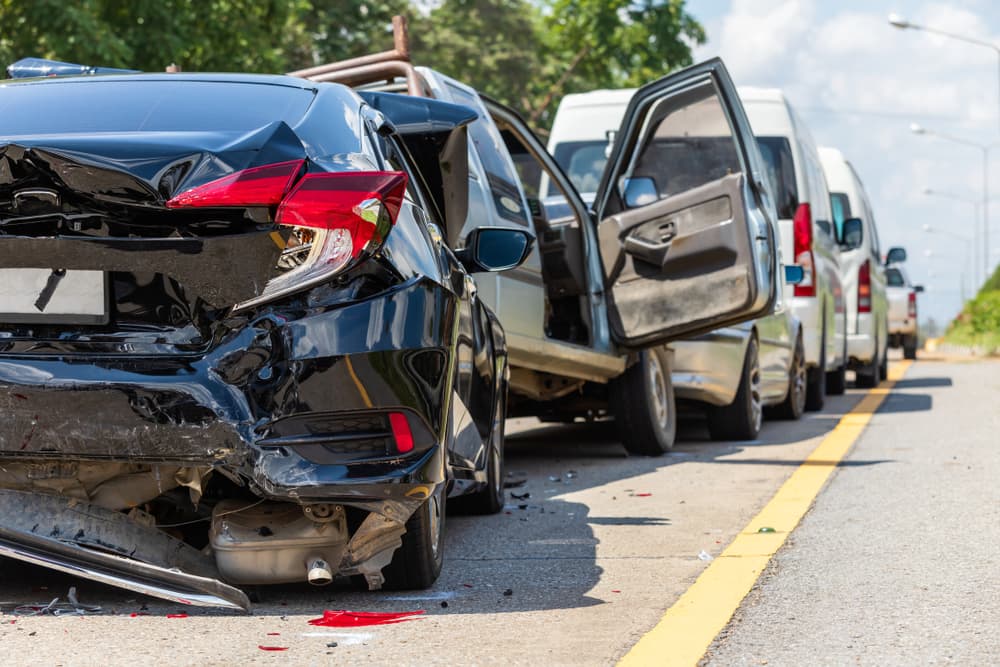
Pileups involve three or more cars. They often happen on highways, especially during poor weather or low visibility.
Typical causes:
- Tailgating
- Speeding
- Fog, snow, or ice
One car may hit another and cause a chain reaction. It can be hard to tell which driver started the crash, making insurance claims more complicated.
Who Might be Responsible?
- The first driver who caused the crash
- Drivers who failed to stop in time
- Those driving too fast for conditions
These cases need careful review of police reports, traffic cams, and expert analysis. Victims may face delays in getting compensation.
Hit-and-Run Accidents
Hit-and-run accidents happen when a driver leaves the scene without giving contact information or helping those who are hurt.
This can happen after:
- A pedestrian is hit
- A parked car is sideswiped
- A two-car crash where one person flees
Victims may feel helpless, especially if they cannot identify the driver. In Illinois, you can still file a claim through your own uninsured motorist policy if you have one.
What to do after a hit-and-run:
- Call police right away
- Write down anything you remember
- Look for nearby cameras or witnesses
The sooner you act, the better your chance of finding the other driver or proving your claim.
Rollover Accidents
Rollovers are violent and frightening. They happen when a car tips onto its side or roof. Some roll once. Others roll multiple times.
These crashes often happen with:
- SUVs or trucks (taller vehicles with higher centers of gravity)
- High speeds
- Sudden turns or curb hits
Three major causes:
Tripping
This happens when a car hits a curb, pothole, or soft shoulder and flips.
Sharp Turns
A car may roll over if it takes a sharp curve too fast, especially on ramps.
Collision
A side impact from another car can cause a vehicle to roll, especially if struck low.
Rollover crashes often cause roof crush injuries, broken bones, and trauma from being thrown around or ejected from the car.
Pedestrian Accidents
In Chicago, many people walk to work, school, or the train. This raises the risk of pedestrian accidents, especially in busy areas.
Common scenarios:
- A driver turns without seeing a pedestrian
- A car runs a red light
- A pedestrian crosses mid-block
Even low-speed hits can cause:
- Broken bones
- Brain injuries
- Life-changing trauma
Pedestrian accidents often involve disputes over who had the right of way. Cameras, witness statements, and police reports can help sort things out.
Bicycle and Scooter Collisions
Bicycles and scooters are popular in Chicago. But they come with risks. Riders have little protection, and many drivers don’t look for them.
Common causes:
- Dooring (when a parked car’s door opens into a rider’s path)
- Turning cars that fail to yield
- Drivers veering into bike lanes
How riders get hurt:
- Falling after a dooring incident
- Being hit from behind
- Getting knocked sideways into traffic
Victims may not know who to blame. In some cases, more than one party could share responsibility, including delivery drivers or city vehicles.
Drunk and Drugged Driving Accidents
Despite strong laws, impaired driving still causes many crashes in Chicago. These accidents often happen late at night or on weekends.
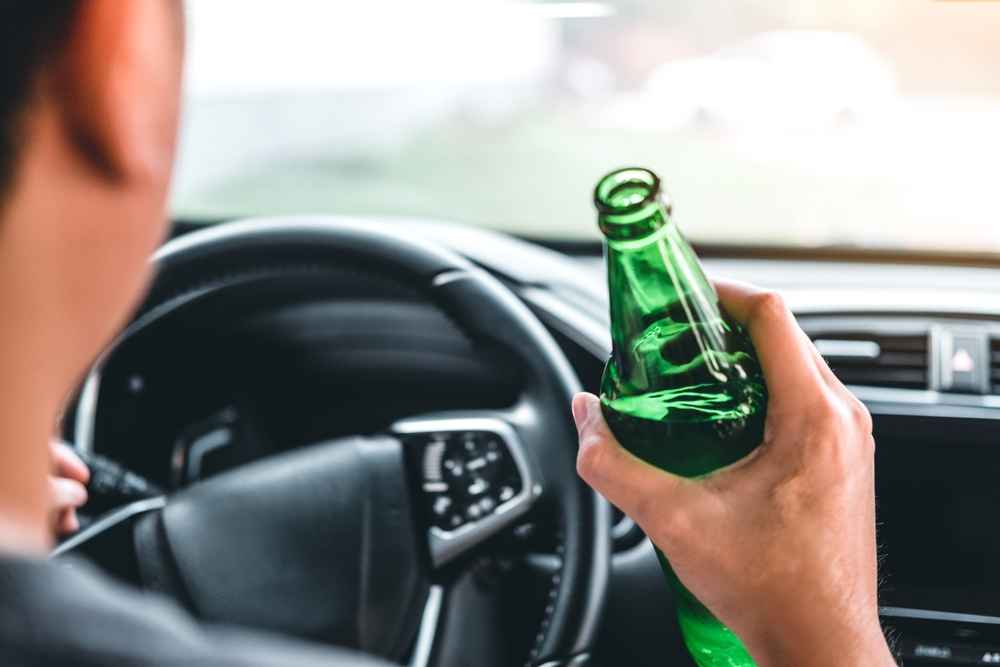
Signs of impaired driving:
- Swerving
- Speeding
- Driving the wrong way
Victims may not realize the driver was drunk until police arrive or medical tests are done.
Injuries are often serious. Drunk drivers may not brake or swerve, making the crash worse. Victims may be entitled to extra compensation through punitive damages.
Distracted Driving Crashes
Phones are a leading cause of distracted driving, but distractions can also include:
- Eating
- Talking to passengers
- Reaching for something
Even two seconds of distraction can lead to a crash. These crashes often involve:
- Rear-end impacts
- Running stop signs
- Drifting into other lanes
If you think the driver was distracted:
- Tell the police
- Look for traffic camera footage
- Ask for phone records if you sue
Proving distraction is not always easy. A lawyer can help gather the right evidence.
Car Accidents in Parking Lots and Garages
Parking lot crashes are more common than most people think. These accidents don’t always happen at high speeds, but they can still cause injury and confusion.
In downtown Chicago, where parking is tight and garages are busy, people get hit while pulling out, walking between cars, or even standing still.
Many drivers assume that accidents in parking lots are “no-fault” or not serious enough to report. That’s not true. A crash in a private lot still carries legal consequences.
It may also involve multiple layers of responsibility, depending on who owns or manages the lot.
What makes these cases different?
- The accident may happen on private property, not a public road.
- Police may not respond unless there are serious injuries.
- Some drivers don’t report the crash or leave a note.
Common scenarios include:
- Two drivers backing out at the same time
- A moving car hitting a pedestrian or shopper
- A driver speeding around corners inside a garage
- Fender benders near the ticket booth or exit gate
Insurance companies may try to deny or reduce claims by saying the crash happened at low speed or didn’t cause visible damage. Injuries can still happen, especially to pedestrians, cyclists, or older adults.
What should you do after a parking lot crash?
- Call the police and ask if they will file a report
- Take clear photos of vehicle positions and damage
- Talk to anyone nearby who saw what happened
- Ask the property owner if surveillance footage exists
Even if the crash seems small, it helps to treat it seriously. These cases often turn on details, such as who had the right of way, what signs were posted, or how fast someone was going.
If the person who hit you was not paying attention or ignored garage rules, you may have a strong claim.
Frequently Asked Questions
What if I wasn’t in a car when the accident happened?
You can still have a valid claim. People get hurt while walking, biking, using scooters, or standing near the road. If a driver caused the accident and you were injured, you can usually file a claim just like someone inside a car.
Can I still file a claim if I didn’t go to the hospital right away?
Yes. Some injuries don’t show up right away. Pain may take hours or days to appear. If you waited, that doesn’t mean your case is lost. See a doctor as soon as possible and keep records. That visit may connect your injuries to the accident.
What happens if both drivers blame each other?
This is common. Insurance companies often try to split fault. But that doesn’t mean you’re stuck. Photos, camera footage, and witness statements can help show what really happened. You may still recover money even if you share some blame.
How do I get a copy of the crash report in Chicago?
You can request it online through the Chicago Police Department or in person at the station. The report includes details about location, parties involved, and officer notes. It’s often an essential piece of your claim.
Do I have to talk to the other driver’s insurance company?
No. You are not required to speak with them directly. In fact, it’s usually better not to. They may try to get you to say something that hurts your case. A lawyer can handle that conversation for you.
Get Experienced Legal Help Today
Every type of car accident comes with risks. Some cause minor injuries. Others change lives. If you were hurt in a Chicago crash, you do not have to figure things out on your own.
Walner Law helps people hurt in all types of car accidents. The team knows Chicago roads and how to handle complex claims. For a free consultation, call (312) 410-8496 today.


 Skip to content
Skip to content

